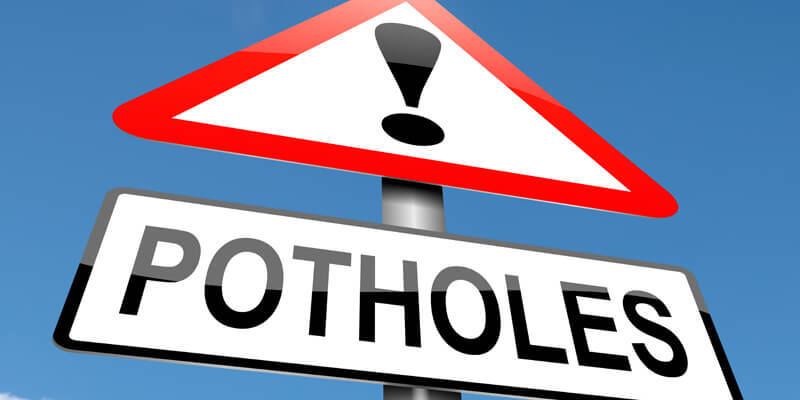With highway maintenance budgets back to 2005 levels, and with a backlog of repairs topping £11 billion, we asked Steve White at Yotta how technology might make a difference for cash-strapped Councils

GeoConnexion (Geo): Yotta and GPC have recently joined forces to help local authorities better manage pothole repairs. Can you elaborate on this?
Steve White (SW): The two companies have formed a collaborative agreement, whereby they are pooling their complementary solutions sets to tackle potholes. GPC’s 3D Measure solution provides a means of both quickly and accurately measuring potholes via 3D imaging, ensuring that resource requirements and costs can be known earlier in the maintenance process, optimised and wastage kept to a minimum.
With the help of Yotta’s connected asset management software, Alloy, councils can manage and make sense of this data and ensure the worst potholes are identified and can be prioritised for treatment. The approach both makes roads safer for residents and other road users and reduces the risks for councils of being impacted by costly litigation.
Looking further ahead, the solution can also use advanced AI capability to ascertain where potholes are likely to occur in the future, thus moving towards a more proactive way of managing repairs.
Geo: How will this technology help to improve decision-making when it comes to highways maintenance?
SW: With solutions based on these complementary technologies, councils will have the means to gather, interpret and ensure data is presented in a way that helps them make more informed decisions.
GPC will also integrate its 3D Construction tool with Yotta’s Alloy. As a result, customers will be able to not only assess a highways construction project and accurately measure the size and volume of the job and any in-fill materials needed, but also ensure that data is captured and shared with all key stakeholders, including inspectors, engineers and those responsible for the delivery of maintenance work, be that internal teams or contractors. This will help reduce operational costs and help ensure greater project accuracy.
Geo: What does this technology mean for the future of highways management and road safety?
SW: The combination of GPC’s advanced AI and 3D dimensioning capabilities with Yotta’s connected asset management software, Alloy, has the potential to bring far reaching benefits to councils. These benefits could potentially encompass not only highways management and road safety but also other areas of their infrastructure management such as pavements, paths and cycle lanes, and where the identification and quantification of defects is equally important.
Having the ability to capture a richer set of defect data at source, and then utilise this data as part of the processes for defining and optimising the activity to rectify the defects, should increase the efficiency of working practices and ensure assets are managed more effectively. Where a wider supply chain is involved e.g., in the provision of materials or in delivering the rectification work itself, having this level of information will help minimise wastage of time and materials, and ensure job assessment and costing is managed effectively. The additional insight that this technology brings will help ensure that highways and wider surface asset defects are identified and fixed in a timelier manner and therefore help ensure the safety of the travelling public.
Geo: How will this impact the end-user?
SW: By tapping into this new technology capability, end users will have the ability to work smarter. They will be able to capture key data about the highways network and its condition more quickly and then analyse it more easily. This, in turn, will help streamline the whole process of highways management and maintenance with better and quicker decisions and more optimised use of limited budgets.
Residents and road-users will benefit from being able to use a safer and more robust road surface which, in turn, has the potential to improve their relationship with the council and their level of engagement with the services that the council offers.
Geo: What other areas are Yotta and GPC exploring that will help local authorities?
SW: Nothing has as yet been finalised, but the partners plan to branch out from working purely on opportunities related to highways infrastructure into other service areas. This could potentially include working to develop enhanced functionality for street lighting for example, or managing street works schemes.
It is certainly the case that, the ability to capture and measure any asset data using 3D imaging technology has a wealth of other potential benefits beyond the maintenance and management of surface assets. The application of this emerging technology would allow, for instance, the capture of location and measurement details of a wide range of public realm assets quickly and without the need for physical contact, at a time when many councils are seeking to establish more accurate asset details whilst working within the constraints that Covid-19 has imposed on their operations.
Being able to capture images and combine them with software whose algorithms calculate asset dimensions would help to establish and maintain accurate asset registers e.g., of signage, safety equipment, etc. The use of AI within 3D image capture could also allow for the automatic calculation of asset condition, again offering streamlined inspection processes and providing greater insight into changes in asset condition over time.


